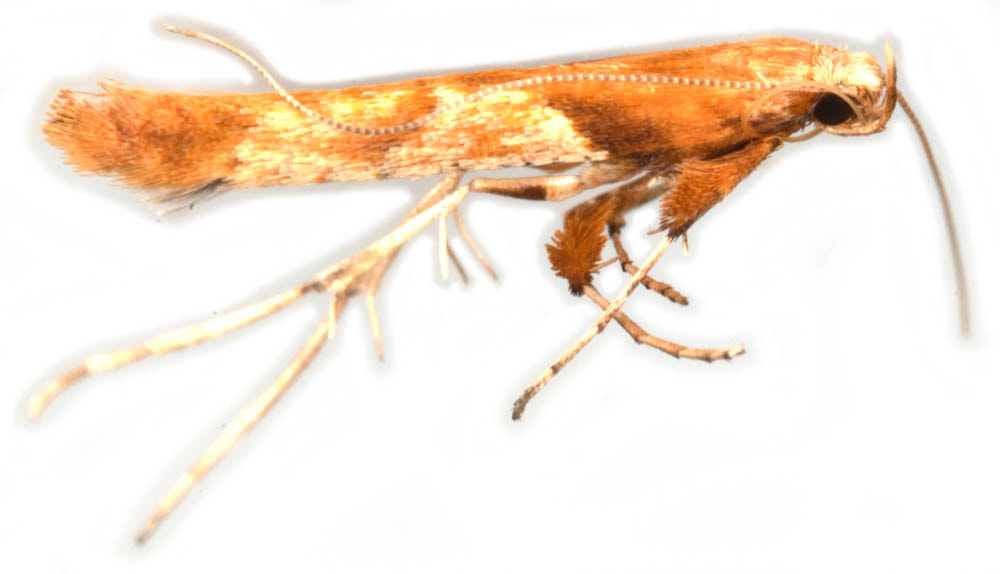15.013 Caloptilia hemidactylella (Scarce Maple Stilt)
ws: 12–14mm; Sep‐May; sycamore (Acer pseudoplatanus); RDB - initially found in and around Whittlebury Forest, Northamptonshire, now spreading in East Anglia with several records from Suffolk and Norfolk.
ID: Forewing with a yellow median costal blotch extending distally along the costa, with a red-brown fascia at its proximal margin. Very similar to C.honoratella. In C.honoratella the forewing base proximal to the red-brown fascia is yellow (similar in colour to the costal blotch); in C.hemidactylella this area is a shade of brown paler than the fascia but not as pale as the costal blotch. Genital determination required.
Male genitalia: In C.honoratella the vesica/ductus ejaculatorius contains a narrow lightly sclerotised ribbon; in C.hemidactylella it contains a line of (~10) small cornuti and a larger distal (apical) cornutus. There is also a difference in the shape of the valval apex, that of C.honoratella being more smoothly rounded.
Female genitalia: In C.honoratella the ductus bursae is hyaline, straight, narrow and studded with small spicules.
In C.hemidactyla it is sclerotised, with a complete coil at ½, relatively broad and without spicules.
Male genitalia: In C.honoratella the vesica/ductus ejaculatorius contains a narrow lightly sclerotised ribbon; in C.hemidactylella it contains a line of (~10) small cornuti and a larger distal (apical) cornutus. There is also a difference in the shape of the valval apex, that of C.honoratella being more smoothly rounded.
Female genitalia: In C.honoratella the ductus bursae is hyaline, straight, narrow and studded with small spicules.
In C.hemidactyla it is sclerotised, with a complete coil at ½, relatively broad and without spicules.
§1 Hazeleigh, Essex; 11/09/2023; male; fw 6.8mm; specimen obtained by Simon Wood; First for Essex
All images © Chris Lewis
All images © Chris Lewis
Page published 19/09/2023 (§1)












